How to visit Westminster Abbey in London
Westminster Abbey is a uniquely historic site in London and a fascinating place to visit. A royal church with over a thousand years of history, the Abbey is probably the most famous place of worship in the world, and the center of many national events and celebrations. It has touched the lives of the kings, queens and commoners: artists, poets, soldiers, scientists, and political leaders.
It’s almost surreal to walk into Westminster Abbey because so much of it feels familiar. Whether that is from seeing television coverage of recent events like the state funeral of Queen Elizabeth II in 2022, or from historical photos of royal weddings, coronations and national ceremonies, it felt to me like somewhere I’d been before.
Westminster Abbey has been the site of every coronation of a British monarch since 1066, and is the resting place of more than 3,000 notable Britons.
Parliament’s Victoria Tower is clearly visible from the College Gardens of Westminster Abbey.
Westminster Abbey is right across the road from the Houses of Parliament, and you can easily visit them both in one day, as we did on our most recent trip to London.
The parts of the Abbey I enjoyed most were High Altar, the Lady Chapel and the College Gardens.
The gardens were a particular surprise - so hidden they feel almost secret. They are a little off the path of the self-guided audio tour, and easy to miss. If you feel like you are running out of gas by then with so much to see in the Abbey, you can definitely feel refreshed after a visit to these beautiful gardens, which are apparently open all year.
How to get to Westminster Abbey
Westminster Abbey is located in the heart of the area known as the City of Westminster, making it walkable from most of the main sites in Central London and easily accessible by public transport.
To get there by London Underground: The closest stations are Westminster and St. James's Park, both approximately a five-minute walk away.
Westminster station: Serviced by the Jubilee, Circle, and District lines.
St. James's Park station: Serviced by the Circle and District lines.
To get there by Bus: Many bus routes stop directly outside the Abbey, including routes 3, 11, 24, 26, C10, and 148.
Parking is very challenging in this area, so driving isn’t recommended.
Ticket and tour information for Westminster Abbey
General Admittance Tickets
Adults - £31
Seniors (over 65) & Students - £28
Children (6-17) - £14
Self-guided Multimedia guide included with ticket.
Addition of The Queen’s Diamond Jubilee Galleries - + £5 per adult ticket
You can purchase tickets from the official website here, or you can purchase tickets through tour operators like Get Your Guide or Viator.
We would highly recommend Get Your Guide. The price for the basic ticket is the same as on the official site, and Get Your Guide has a fantastic app with great maps, etc.
We are Get Your Guide affiliates because we really use them on our trips. You can get your General Admission tickets from Get Your Guide here.
Note - This blog post contains affiliate links. If we recommend a product, activity, or hotel, we might receive a small commission if you buy or book from these links. This is done at no additional cost to you. We only recommend products we have personally used or have thoroughly researched.
Available tours:
Self-Guided Audio (Multimedia) Tour - A multimedia guide is included in the price of admission. You can use the device provided at the Abbey or download a shortened version of the guide on your mobile phone. (This is what we did and it's very nice to be able to spend time in the parts of the Abbey that most interest you.)
Highlights tour - At times when the entire Abbey cannot be opened to visitors, a highlights tour is offered at a reduced price
The Queen’s Diamond Jubilee Galleries - For an additional charge of £5 for adults at the time of ticket purchase, you can see this recently added exhibit space, which showcases priceless artifacts from the Abbey’s archives and libraries in the unique setting of a “hidden attic” high above the Abbey floor.
This is a timed ticket because it is a small medieval space with limited room. You also will need to climb a lot of stairs up the Westin Tower to access the galleries, which offers great views of the Palace of Westminster and is all part of the experience.
Abbey Unlocked tour - Available from 8.30 - 10.00 am on selected dates. A 90-minute small group tour of Westminster Abbey before it opens to the public. Obviously, this is limited availability, so if you want to do this, you should book way ahead.
Get your Guide’s Houses of Parliament & Westminster Abbey Guided Tour available here. Tour both buildings with a guide.
(I rather enjoyed doing it at my own pace, though with the General Admission ticket and multimedia tour.)
What you’ll see on your visit to Westminster Abbey
Westminster Abbey is an architectural marvel packed with memorials, tombs, and sculptures, dedicated over centuries. A dizzying amount of history and art to absorb, really! The audio tour will give you very in-depth information about all of it, but here are some of the highlights that resonated with me.
The Nave at Westminster Abbey.
The Nave
The Nave is a central congregational area of the Abbey that runs from the entrance to the transepts or choir. It is notable for its many memorials and tombs of famous Britons, including the Grave of the Unknown Warrior and of Sir Isaac Newton.
The Nave is notable also for its Gothic architecture. As this is the first place you will see in the Abbey, a lot of people will be milling around, but make sure you look up to appreciate the high, pointed arches, ribbed vaults, and lancet windows. Since it was built in stages, the design is a mix of styles, dating back to the 1200s.
The Grave of the Unknown Warrior.
Grave of the Unknown Warrior
One of the first things you will see when entering the Abbey - and something I particularly wanted to see - is the Grave of the Unknown Warrior, located at the entrance of the Great West Door before you enter the Nave.
This memorial site marks the grave of an anonymous, unidentified soldier from World War I, whose body was brought from France and buried at the Abbey.
To bury an unknown soldier in a place usually reserved for royalty and notables was a poignant idea. The understated marker is of black Belgian marble surrounded by red poppies, and of all the memorial markers on the floor of the Abbey, it’s the only one that no one is allowed to walk on.
The burial ceremony took place in Westminster Abbey on November 11, 1920 - Remembrance Day in the UK - and symbolizes all those who died and whose remains were never identified. It has inspired similar memorials in other countries, including the United States.
I’ve done some reading about that reverent burial in 1920 and it is really so moving to imagine. The soldier’s coffin had spent the night before the ceremony at Victoria Station, where it was guarded overnight before being taken by gun carriage from the station to the Cenotaph and then to Westminster Abbey. This bit of history is still commemorated today at Victoria Station.
In 1923, when Elizabeth Bowes Lyon married the Duke of York (later King George VI), she spontaneously laid her wedding bouquet on the grave in remembrance of her brother who was killed in the war. She proceeded up the aisle without a bouquet. If you look at their wedding portraits taken after the ceremony, you will notice she has no flowers.
Since then, many royal brides married in the Abbey have sent back their bouquets to be laid on the grave after the ceremony, and even some married elsewhere have done the same.
The Coronation Chair is kept behind glass at Westminster Abbey.
The Coronation Chair
Though it is behind glass for preservation and you can’t get too close to it, the Coronation Chair, on which every monarch has been crowned in the Abbey for over 700 years, is on display in the front of the Abbey.
One of the most famous pieces of furniture in the world, it seems, at first glance, remarkably humble for a monarch, but that is really just an effect of its age. When it was first commissioned by Edward I to house the Stone of Scone, which he brought from Scotland, it was very intricately decorated. But much of its original gilding and decoration is gone, and over the centuries, schoolboys have carved graffiti into it. But that’s all part of its history.
When it is called to duty for a Coronation, the chair is carefully moved to the High Altar, to take its place in the ceremony - its one job.
Rows of benches in the Quire.
The Quire
Things get considerably more colorful when you enter the Quire, the part of the Abbey where the world-renowned choir sings during daily services, royal occasions, and concerts.
This is probably the space you will most recognize from TV coverage of events, with its distinctive black and white marble flooring, red-shaded lamps and choir stalls lining both sides of the aisle, which during events are filled with choristers in their white and red robes.
You will pass through the decorative Quire Screen to get from the Nave to the quire. Make sure to take a look at it - it’s pretty incredible.
And those lamps? They are modern LED lights that can change color with the occasion! Which is kind of an interesting thing about the Abbey - as old as it is, it has a lot of modern updates!
The High Altar
The High Altar and the Sacrarium (the broader area where the altar is located) are “center stage” at the Abbey, so to speak (no irreverence intended!!) where ceremonies like coronations and royal weddings take place. So much history has happened right here.
I must admit I spent a lot of time here in front of the few steps that lead to the Sacrarium and its famous Cosmati Pavement, trying to imagine all the notables that must have walked up those steps. So much time that John actually took a seat for a while so I could do my communing! 😂
The Cosmati Pavement in front of the High Altar is quite a remarkable work of art. It is a mosaic pavement of inlaid stone and glass, so intricate and subtle in its detail. Seeing it in person, you really appreciate the high level of craftsmanship. It is said that this is the only place in the world where Cosmati style decoration can be seen on this scale. So make sure you really look at it.
But don’t only look down - look up! - wherever you are in the Abbey, because the towering vaults are breathtaking in scale.
The entire area between the choir stalls and the High Altar are also referred to as the Coronation Theater, a phrase you may have heard during coverage of King Charles’ recent coronation in 2023.
The High Altar at Westminster Abbey.
Shrine of St. Edward the Confessor
Edward the Confessor was a medieval king who, in the 1040s, established a palace on this site and the church we now know as Westminster Abbey. A pious and faithful king, his mortal remains were entombed in front of the High Altar upon his death in 1065, which occurred only a few weeks after the church was officially consecrated.
Some 100 years later, Edward was canonized a saint, and his remains were moved to an elaborate shrine in the area behind the altar, which is a focal point of the Abbey even today.
The area is restricted to visitors because of its fragility, but you can see the shrine, towering above the cluster of tombs of medieval kings and their consorts around it.
One of the many tombs at Westminster Abbey.
Tombs of Westminster Abbey
There are an astounding 3,300 burials in the church and cloisters of Westminster Abbey, about 30 of which are Kings and Queens. The Abbey also contains many memorials and houses the most important collection of monumental sculpture in the country.
One of the most interesting tombs to me was that of Elizabeth I and Mary I, who are buried together. They were half-sisters, both daughters of Henry VIII and the first two queens regnant of England. Mary was a Roman Catholic queen who reigned right before Elizabeth, an Anglican. Though they were divided in life, they were buried here together in this elaborate tomb. As neither of them had children, Elizabeth’s rule marked the end of the Tudor dynasty.
Note that this is Elizabeth I, who reigned from 1558 to 1603, and not “our” Elizabeth II, who just passed away in 2022. The latter Elizabeth is buried at St. George’s Chapel in Windsor, where many of the more modern monarchs were laid to rest. You can read all about the Chapel in our post Visiting Windsor Castle: A Complete Guide.
The Lady Chapel, Tomb of Henry VII and the RAF stained glass window
I think the Lady Chapel was my favorite place of all in the Abbey. It’s just so open and bright compared to some of the other spaces, and the delicately carved ceiling is a sight to behold! It is so colorful with the banners of the Order of the Bath hanging from the rafters and the many stained glass windows allow light to pour in.
The Tomb of Henry VII and his wife Elizabeth of York (the couple who famously united the Houses of York and Lancaster) dominates the space, but there is so much more here. The Lady Chapel is somewhat a “church within a church”, with its own nave, aisles and quire stalls. It is called the Lady Chapel in honor of the Blessed Virgin Mary.
I was particularly excited to see the giant stained glass window in the RAF Chapel in the very back point of the chapel, because it brought my own interest in World War II history into my exploration of this medieval church.
The small chapel is dedicated to the men who died fighting the Battle of Britain 1940. The stained glass window depicts the badges of the many squadrons that fought, including those from the United States, Canada, Poland and Czechoslovakia. It is a very moving tribute in glass.
I was also delighted to see the sword of George VI, one of my favorite historical figures, in a case at the Lady Chapel. It was thrilling to see such a personal item of his up close.
The grave of Charles Dickens in Poets Corner.
Poet’s Corner
This is quite an interesting curiosity at Westminster Abbey - a special space dedicated to poets, writers, musicians and artists. It all began with the burial of Geoffrey Chaucer in 1400, who held a senior position at the royal palace next door. Sometime after Chaucer was entombed there, other notable poets began to ask to be buried beside him.
The tradition expanded and today the corner is crowded with burial markers and memorial plaques honoring many famous artists. Look for markers for Charles Dickens, Lord Tennyson, William Shakespeare, the Bronte sisters, Lewis Carol, George Fredrick Handel, and many more celebrated Britons of the arts.
In the tradition of many royal churches, these monuments, plaques and busts seem to be haphazardly crowded together, a jumble of notables arranged almost like knick-knacks collected on a shelf. Any other historical site would be happy to have one of these burials or dedicated monuments, but here there are almost too many to comprehend!
The beautiful architecture of the Cloisters.
The Cloisters
This elegant open-air arcade is a very old part of the original monastery that was on the site when Edward the Confessor built his palace here. The Cloisters encompass the buildings where monks once lived, worked and went about their daily lives. They adjoin the main part of the Abbey and overlook a grass quadrangle, known as the Cloister Garth.
The Cloisters are a quiet, beautiful architectural space with stunning columns and carved capitals. It is a little less crowded than inside the Abbey itself, a place for a bit of a break. Off the main walkways are some of the oldest parts of the Abbey that still stand.
The amazing stained glass windows of the Chapter House .
The Chapter House and Pyx Chamber
The Chapter House is connected to one of the passageways off the main Cloister and it's worth taking the detour to have a look. It was a meeting place for the working monks, and some of the earliest meetings of the English Parliament even took place here.
Notable is the original tiled floor and painted frescos. The stained glass was replaced after WW2.
Next to the Chapter house is another passageway that leads to the Pyx Chamber, a low vaulted room that is the oldest surviving part of the Abbey.
The oldest door in the UK.
Oldest Door in the UK
Located in the passage to the Chapter House, there is a unique wooden door that is said to be the oldest door in the country. It dates back to Edward the Confessor, and was constructed around the 1050 from a single oak tree that grew between 924 and 1030. Imagine!
Though not on its original hinges, the door is still in active use, providing access to the Chapter House, where important religious documents are stored.
The College Gardens
I feel like the College Gardens of Westminster Abbey is one of London’s best kept secrets. Surprisingly quiet, this 900-year-old garden is thought to be the oldest in England, and feels much the same as it probably did when only monks walked the paths and tended the gardens.
You could easily miss this hidden gem, as it is not actually on the audio tour. Look for a sign toward the end of the route, pointing toward the College Garden, Little Cloister, and St. Catherine Chapel Garden.
These are classic English gardens, timeless with artisanal plantings, a rose garden, herb garden and many beautiful trees and shrubs, some unique to this garden. Look for the charming samples of what is in bloom lovingly labeled in little jars before you enter the garden.
There are many benches to sit and take a moment for yourself. It is lovely to see the Victoria Tower of the Palace of Westminster overlooking this oasis, reminding you just where you are and the historical connections between these two establishments.
Our Favorite Travel Resources
Hotels - Booking.com. Lots of search options and information. Link
Activities - Get Your Guide. We love food tours and historical guides from Get Your Guide. Link
Airfare - FareDrop. Custom notifications of airfare sales. Link
Phone connection - Airalo. E-Sim for your phone, it’s easy and available for every country. Link
Note - This blog post contains affiliate links. If we recommend a product, activity, or hotel, we might receive a small commission if you buy or book from these links. This is done at no additional cost to you. We only recommend products we have personally used or have thoroughly researched.
The Abbey as an active place of worship
Westminster Abbey has been an active place of worship since at least the tenth century. Services are held here every day and visitors are welcome to experience prayer services, Holy Communion, and Evensong presented by the Choir.
Schedule and details are available here on their website.
Some helpful information for visiting Westminster Abbey
General opening hours:
Monday - Friday: 9.30am - 3.30pm (last entry)
Saturday: 9.00am - 3.00pm (last entry)
Sunday: Open for services
(Westminster Abbey is a working church, so it is sometimes necessary to close some areas off to the public and offer reduced opening hours)
Security - Bags are searched before you enter the Abbey. Large items like suitcases and large backpacks are not permitted.
Photo policy - Personal photos are permitted in the Abbey, but not during services or live performances. No flashes, extra lighting, selfie sticks, or tripods. No video recording is permitted.
Dress code - Remember that Westminster Abbey is a place of worship, so dress respectfully. Also, the floors can be uneven, so wear practical shoes.
We toured Westminster Abbey in the morning and the Houses of Parliament in the afternoon. They are located across the street from each other and make a perfect pairing. See our post How to Visit the Houses of Parliament in London for more info.
Eating at Westminster Abbey - Yes, you can eat at Westminster Abbey. The Cellarium Café and Terrace is located in the west cloister and was a medieval undercroft where 14th-century monks stored their provisions. Today it is a cozy spot with a stunning vaulted ceiling, which offers breakfast and lunch menus, as well as drinks, snacks, and afternoon tea.
We actually didn’t intend to eat there, but had a limited amount of time before our tour of the Palace of Westminster, so we went for it. What a great choice! The food was excellent, and the ambiance was perfect.
Light meals, snacks, and cold & hot drinks are also available from the Kiosk outside the Abbey’s west doors.
Flowers in the gardens with the Houses of Parliament in the background.
Don’t miss the Gardens! - It’s not on the audio tour, but look for a sign in the area of the Cloisters.
Public events - Westminster Abbey hosts a number of public events throughout the year, including concerts, lectures, special services, and family activities. Many of these are free and open to the public.
Bell ringing days - The Abbey bells can usually be heard before services and in celebration of church festivals and royal occasions. Always lovely to hear!
Private events - Just as a point of interest, I was genuinely surprised to learn that much of Westminster Abbey is available as an event space. What???? Somehow that doesn't feel right, but I guess everyone’s got to do what they got to do these days! An author I follow did a book launch at Poet’s Corner - I think that’s rather cool!
This post was researched and written by Debbie of the Empty Nest Explorers. You can learn more about the Empty Nest Explorers here

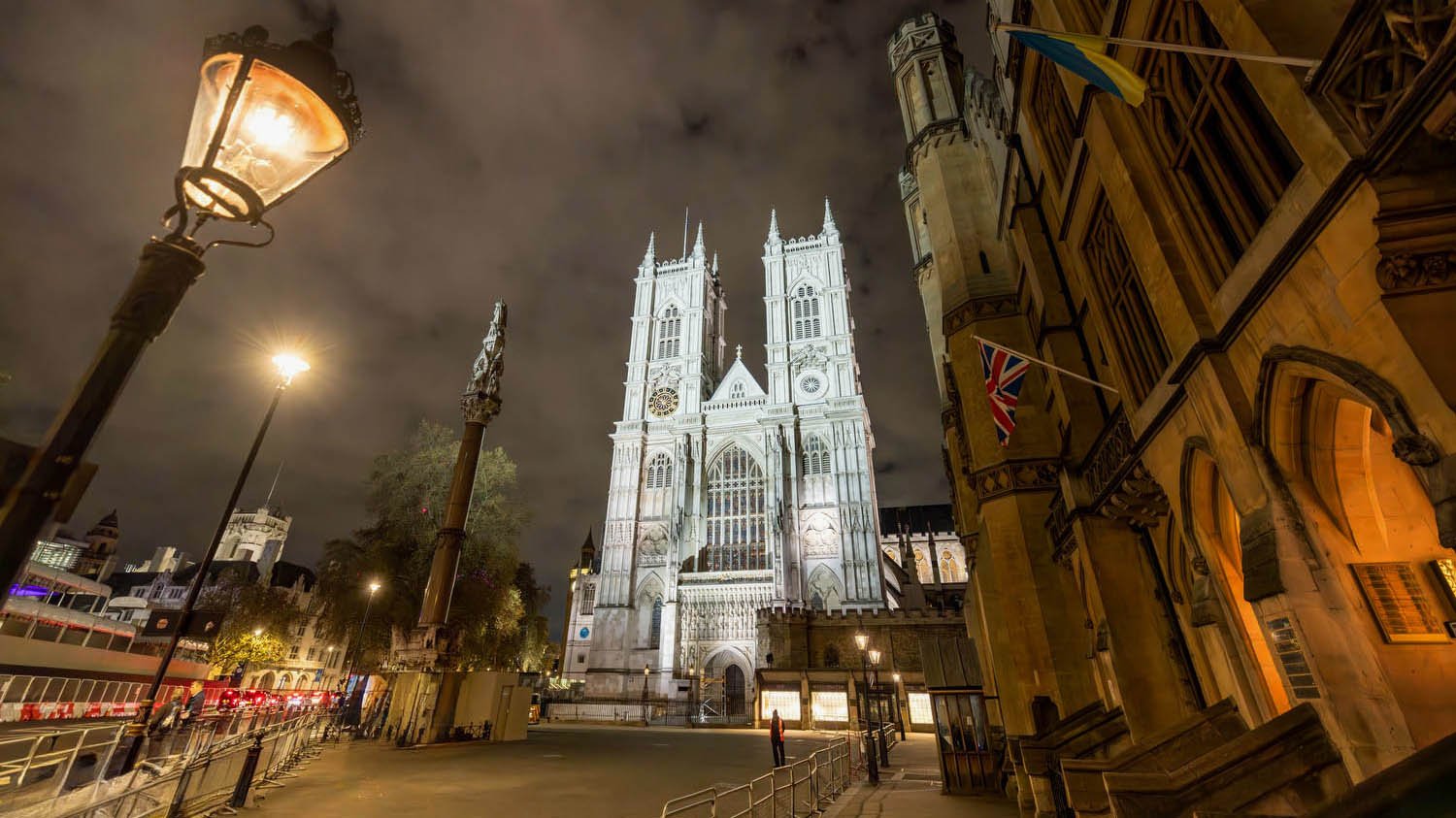

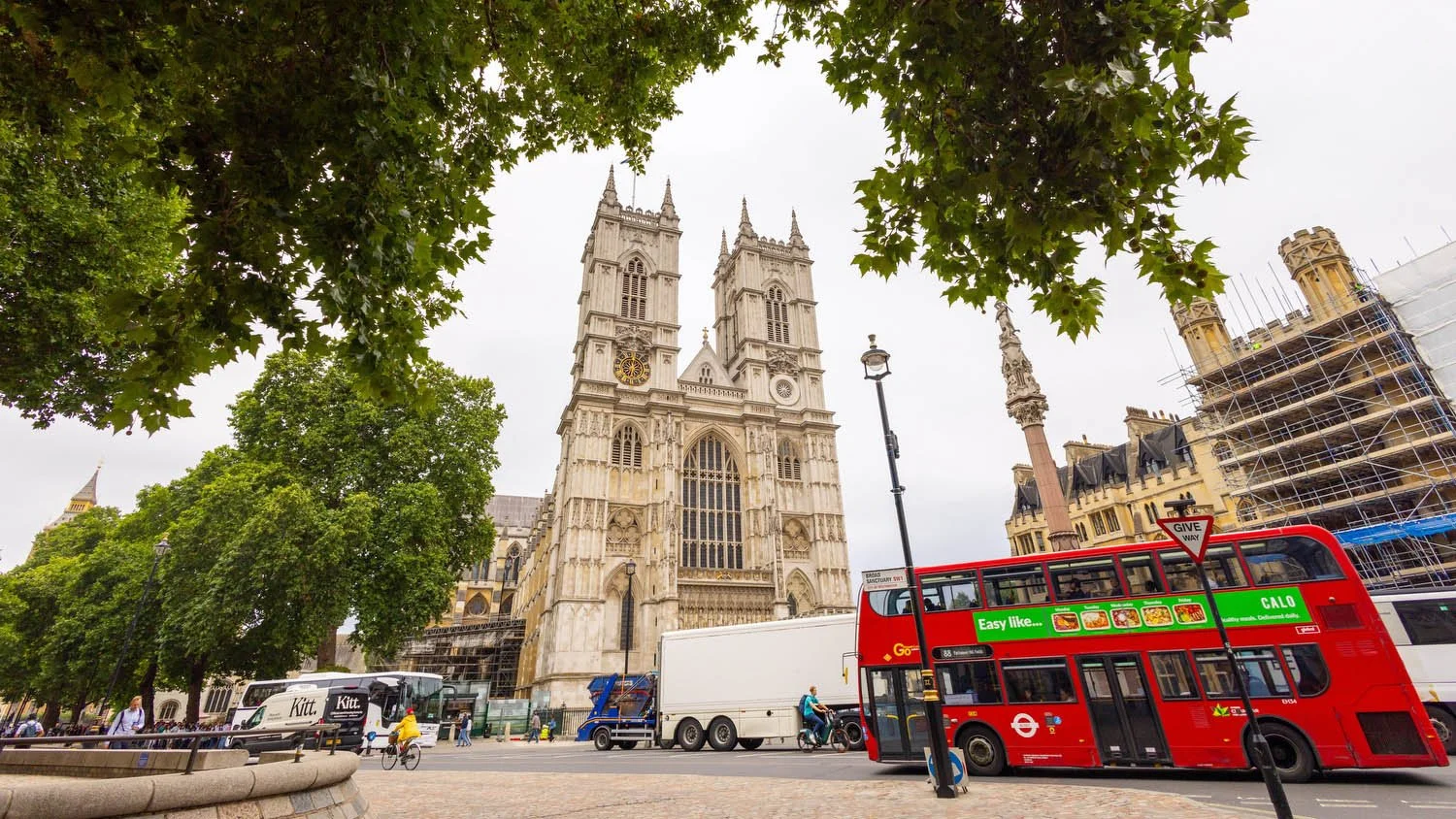

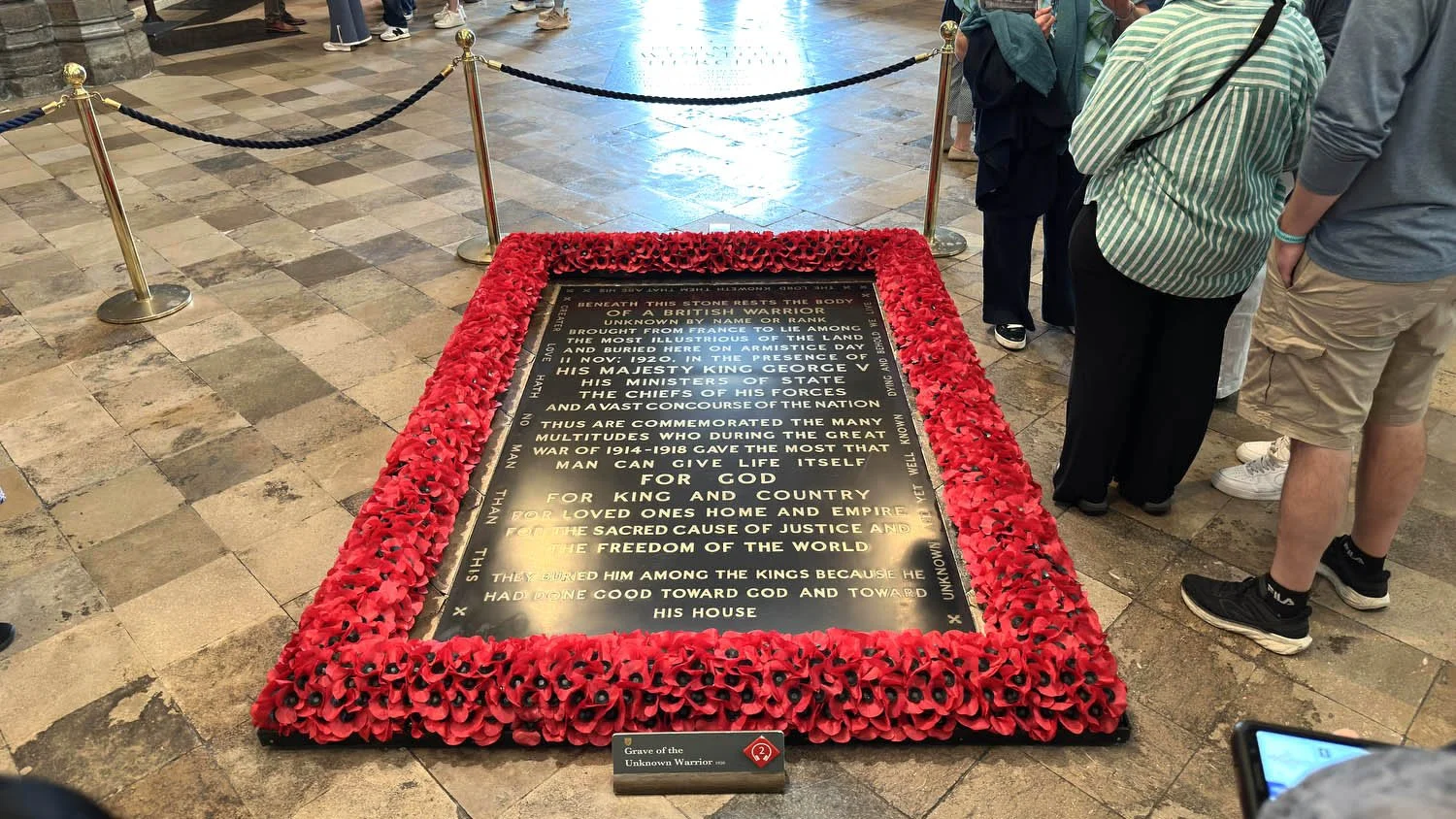

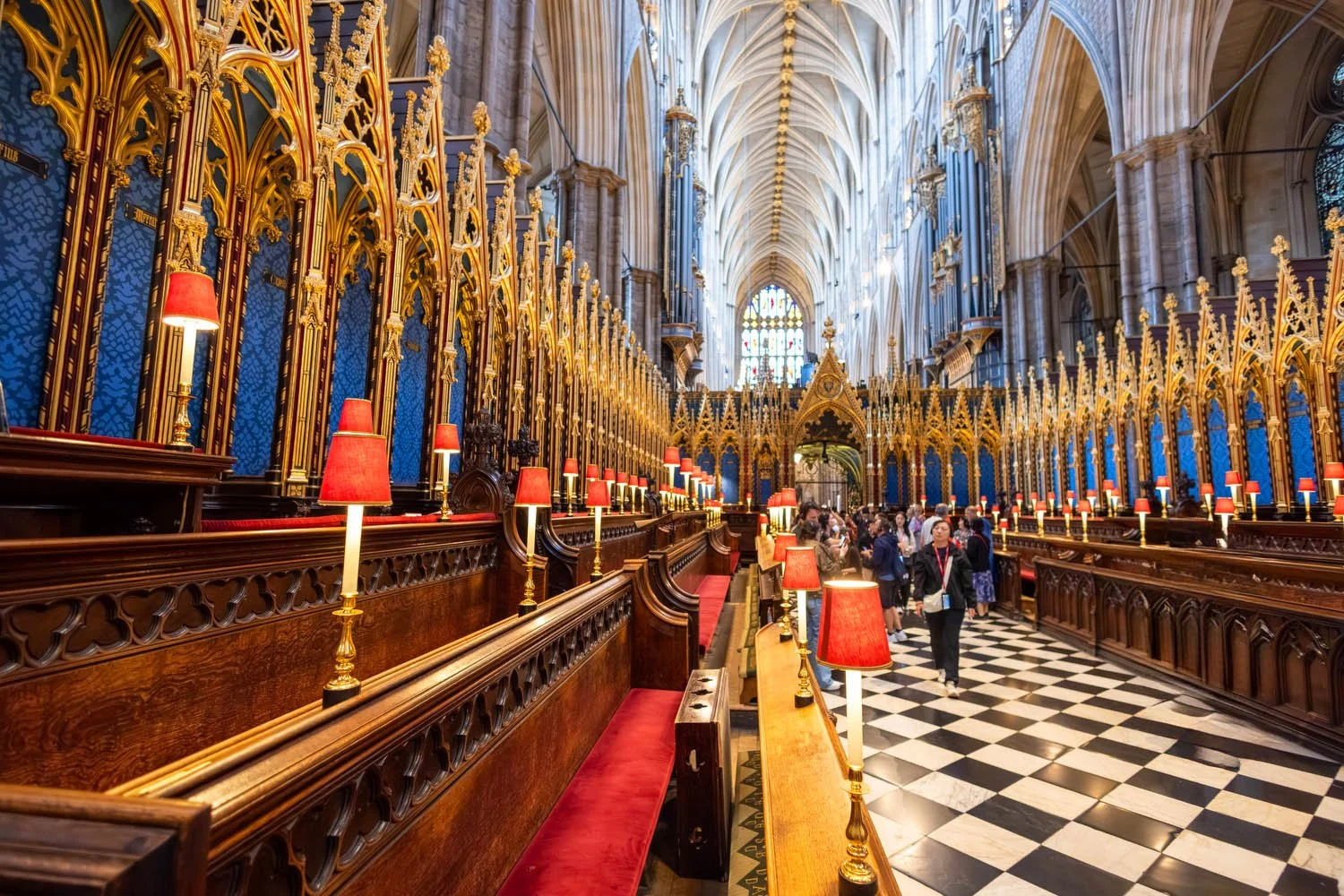

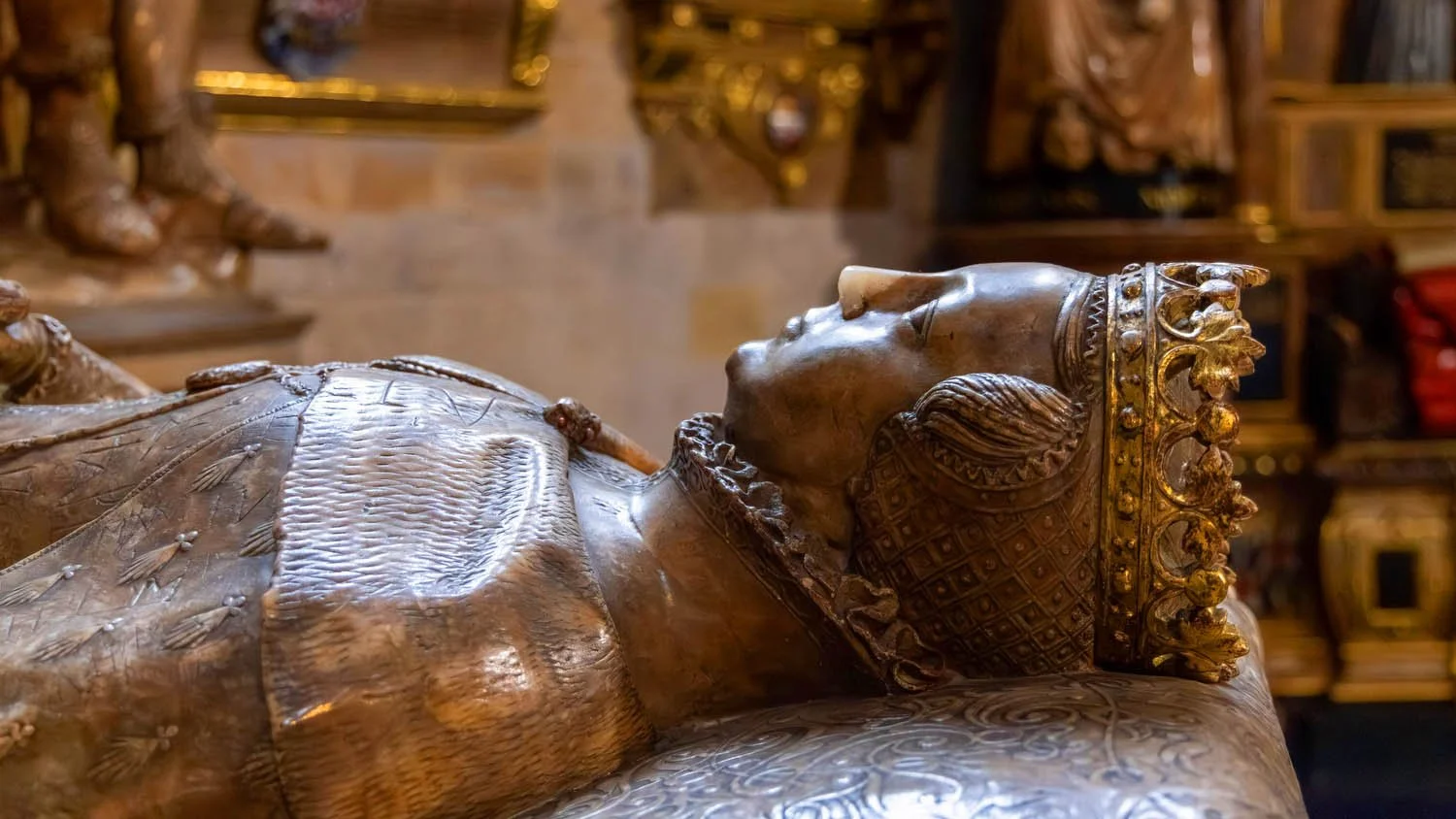




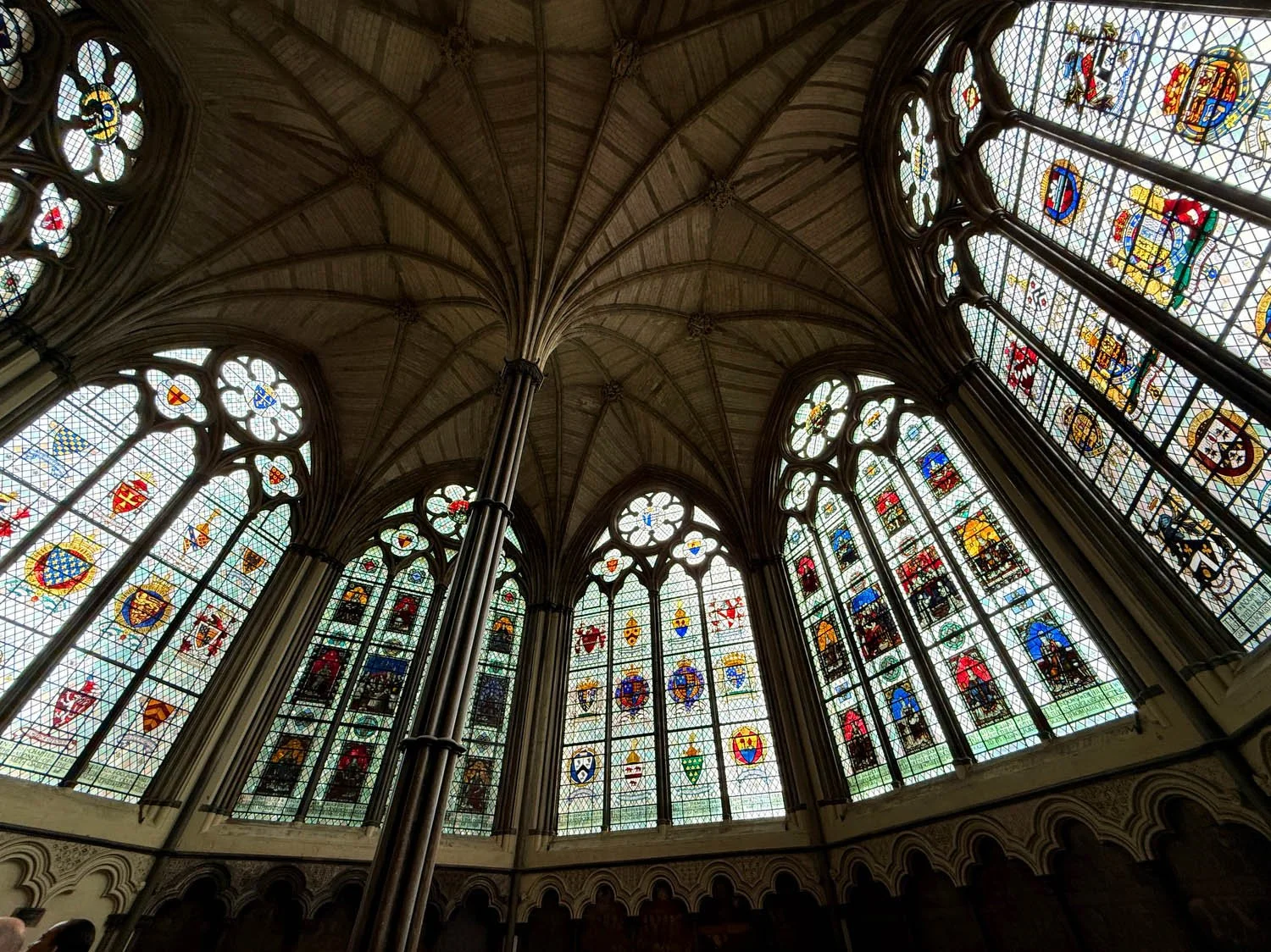
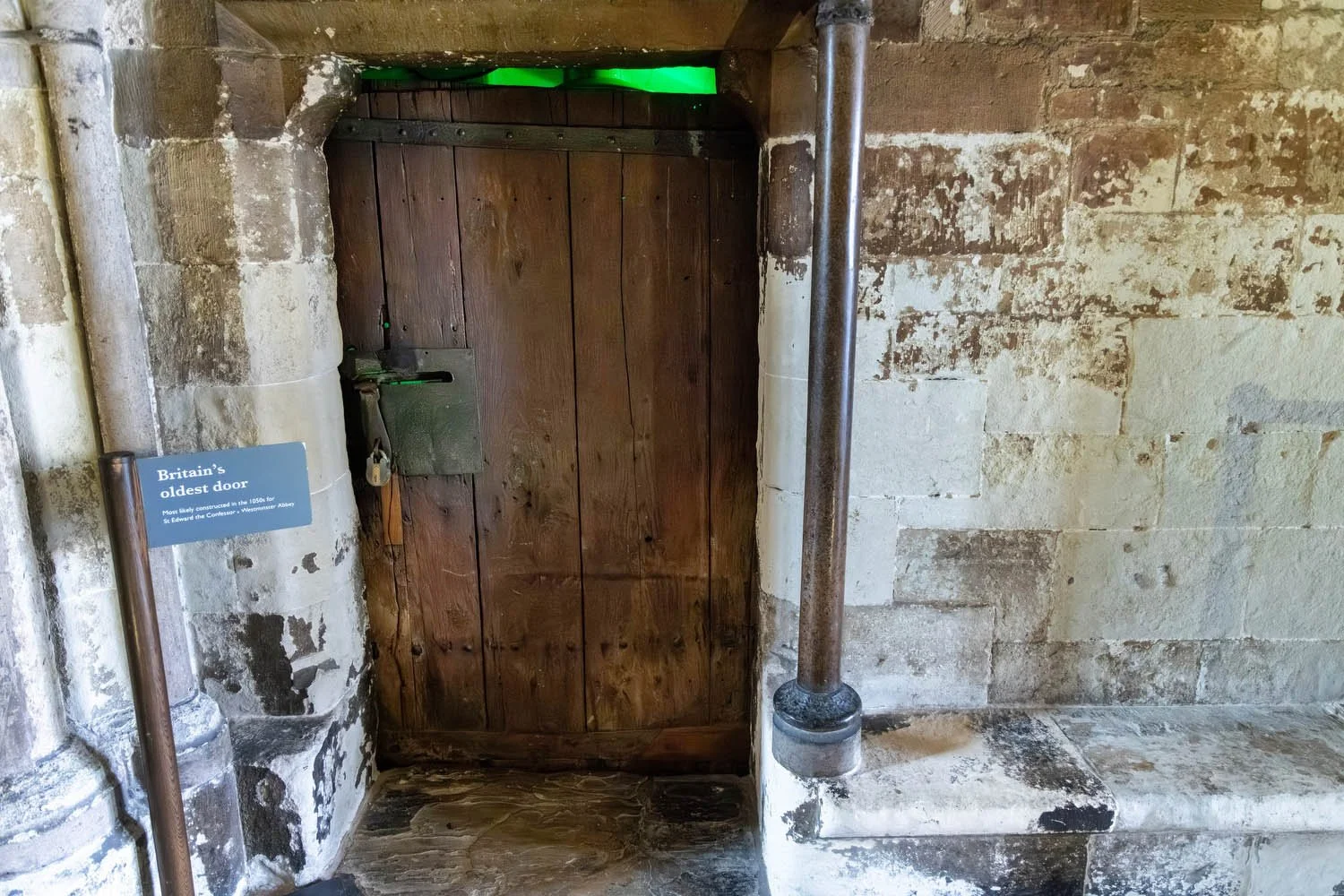


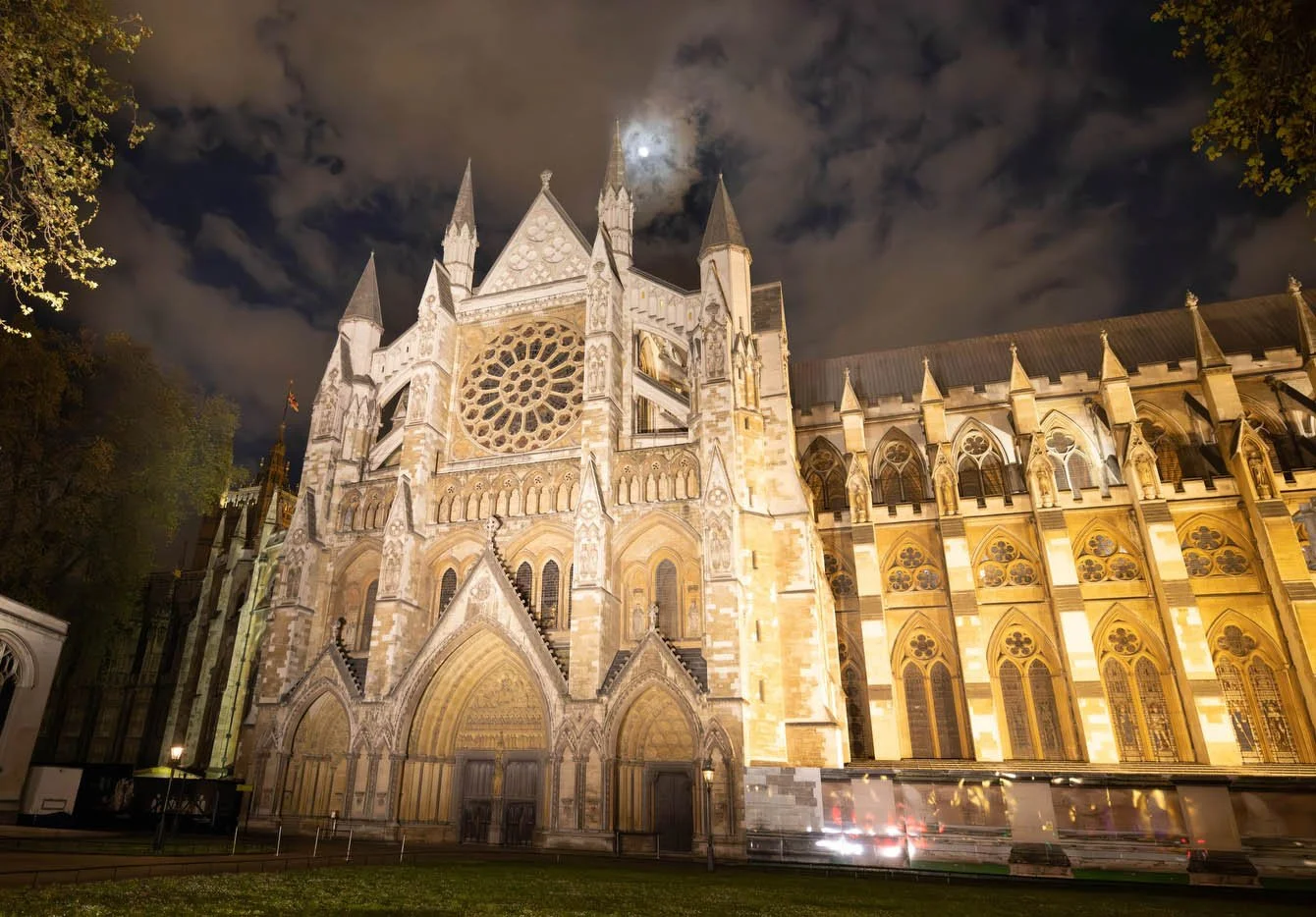
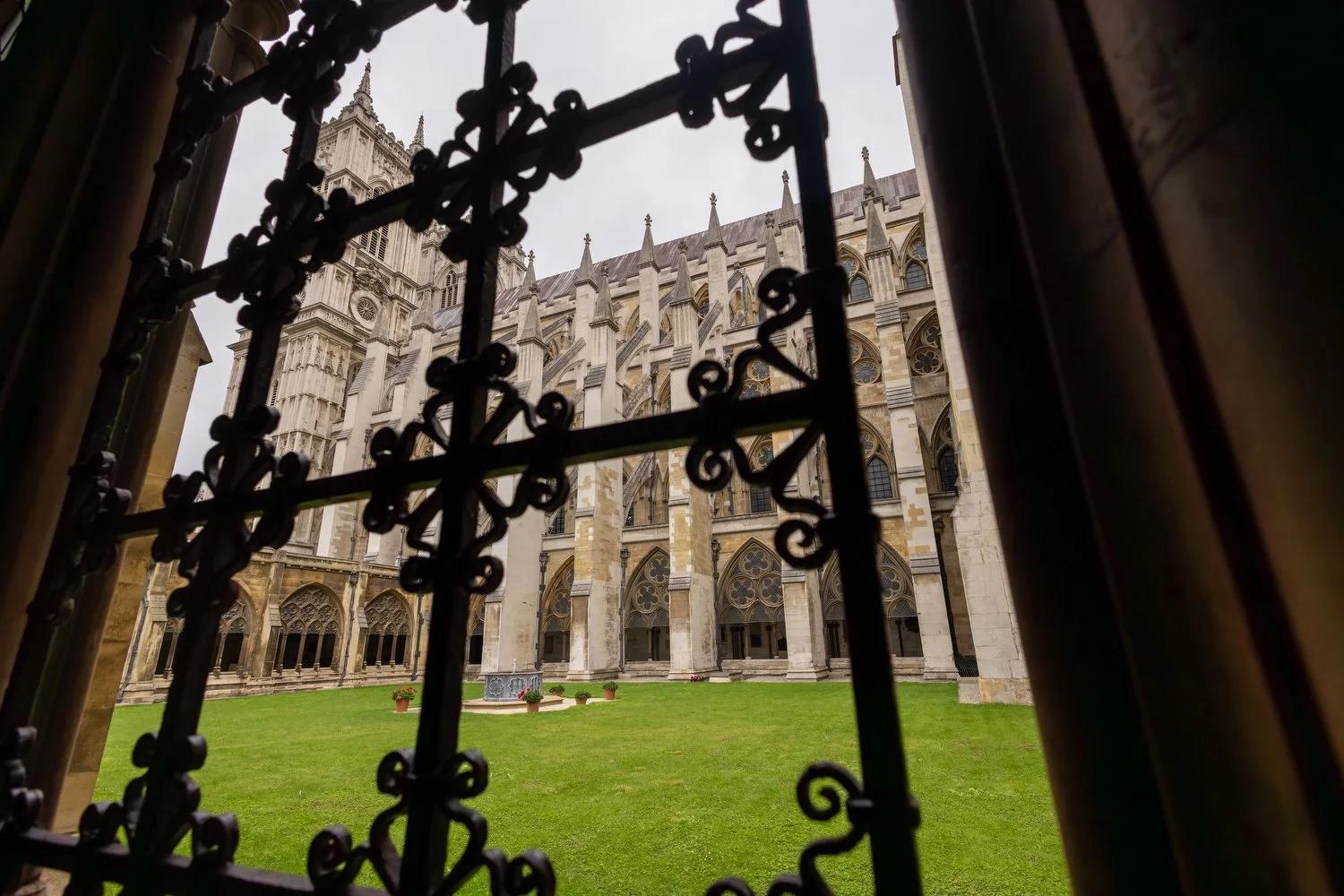









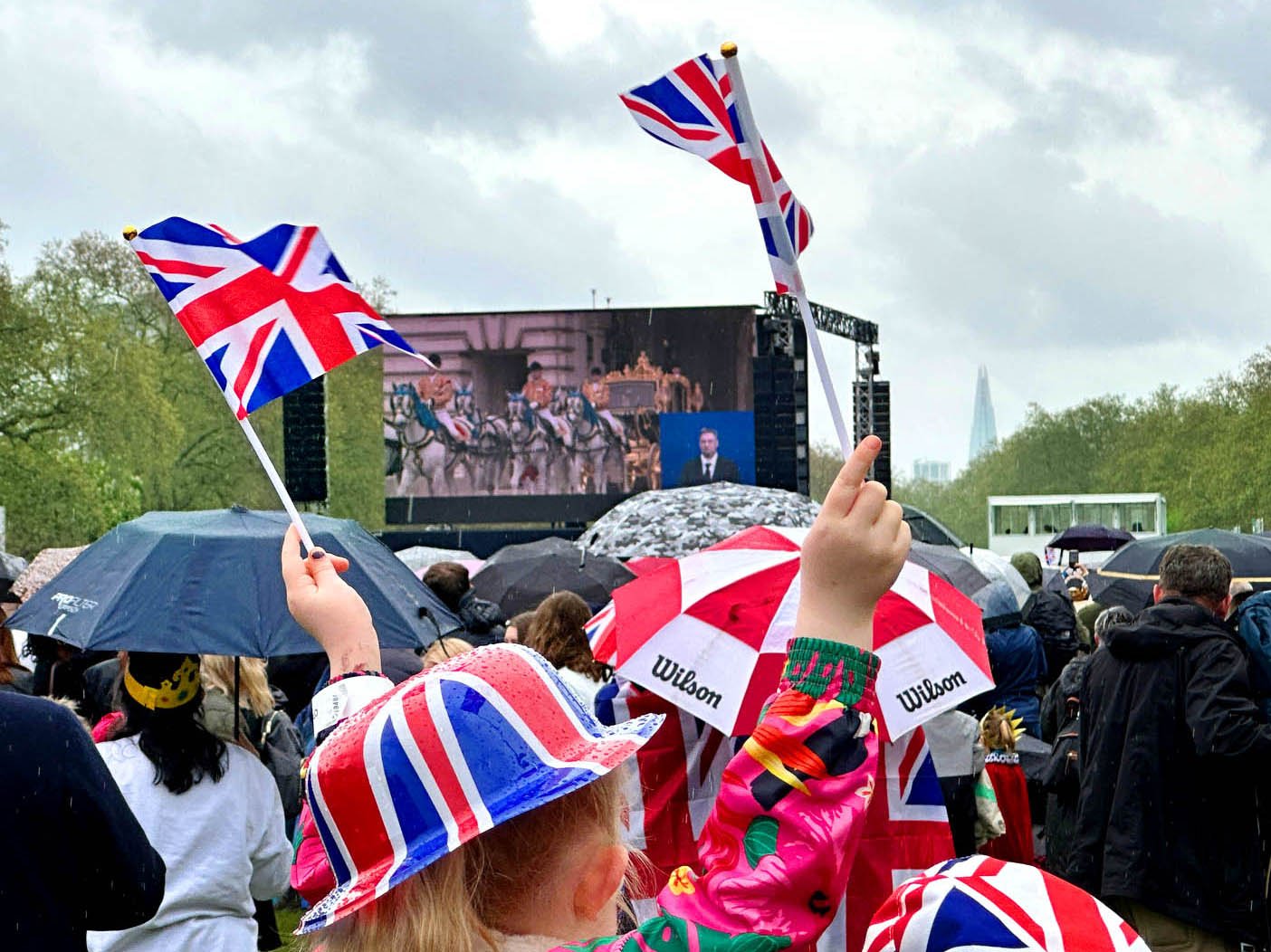




Westminster Abbey is a uniquely historic site in London and a fascinating place to visit.
A royal church with over a thousand years of history, the Abbey is probably the most famous place of worship in the world, and the center of many national events and celebrations.